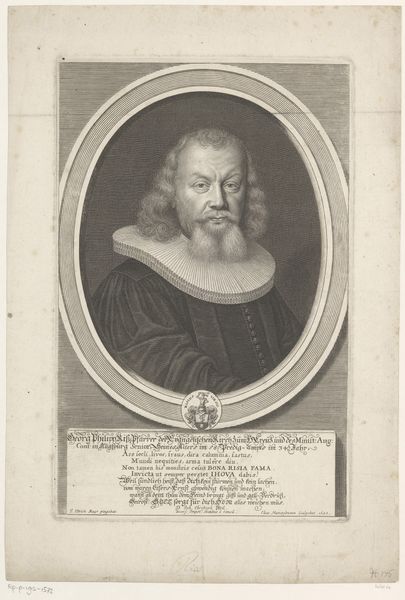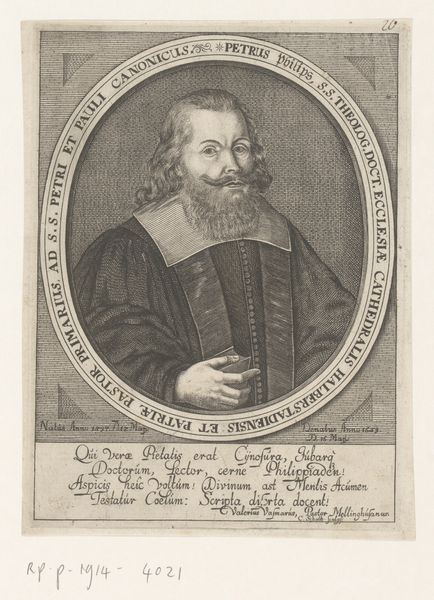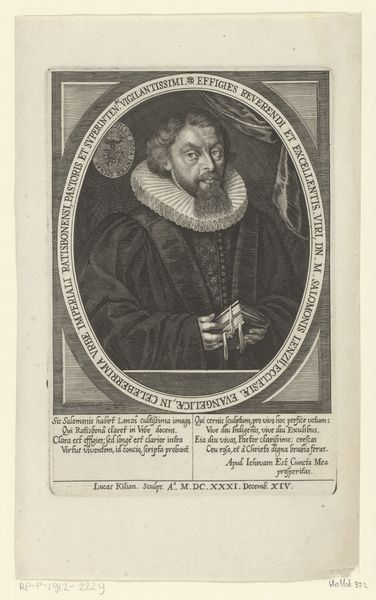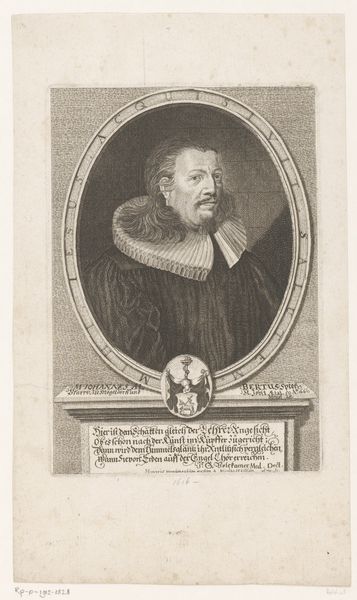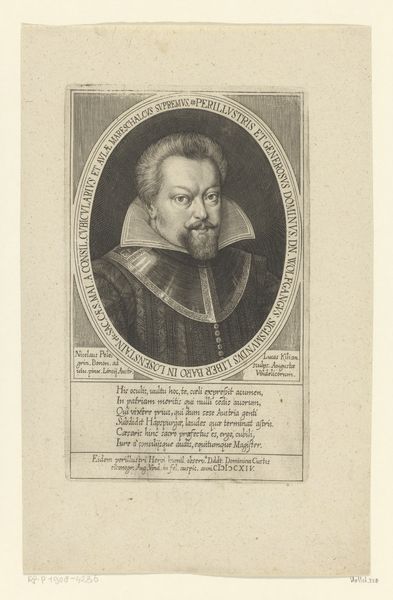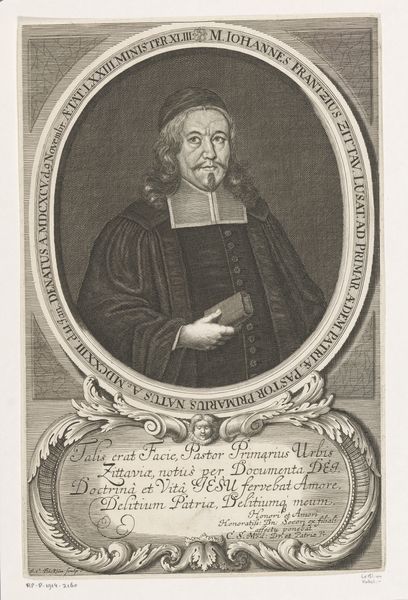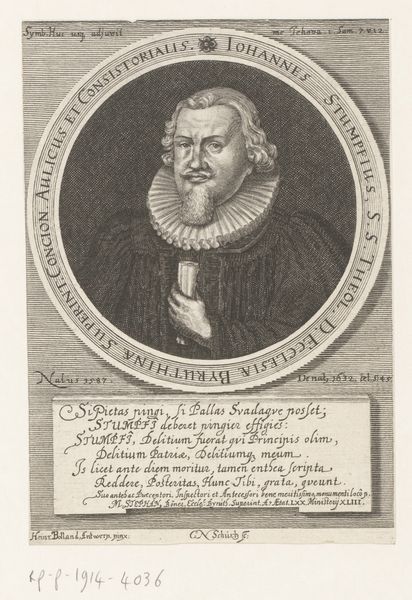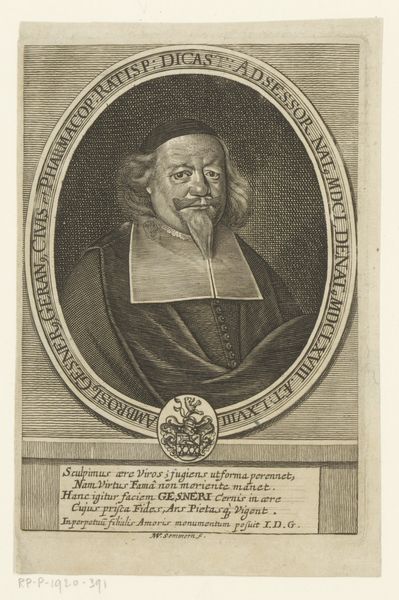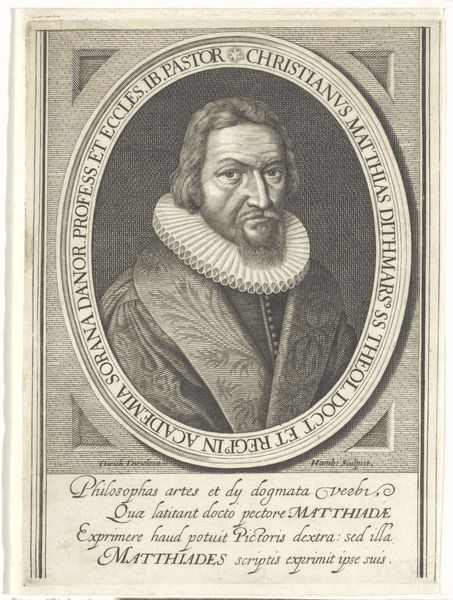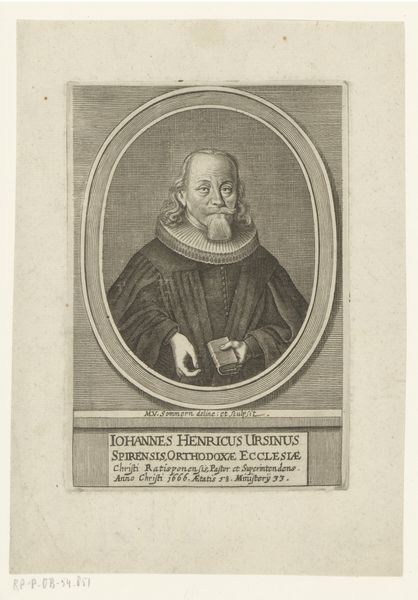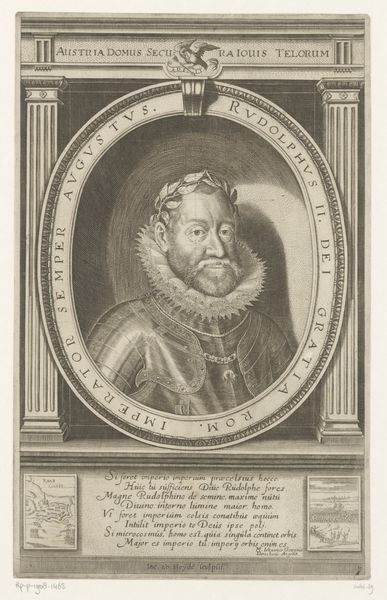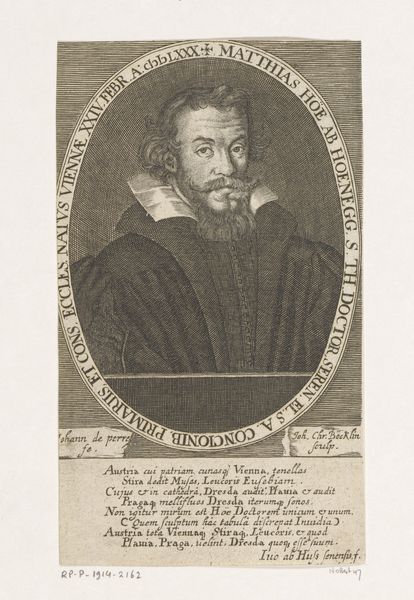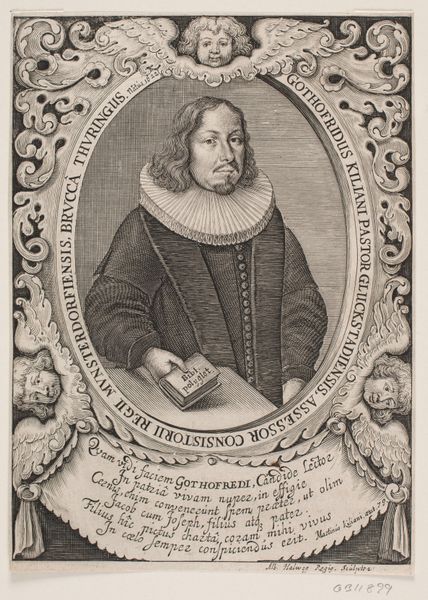
print, engraving
#
portrait
#
baroque
# print
#
engraving
Dimensions: height 180 mm, width 118 mm
Copyright: Rijks Museum: Open Domain
Curator: Lucas Kilian etched this engraving in 1630. Titled "Portret van Daniel Horschel op 46-jarige leeftijd," it now resides in the Rijksmuseum. Editor: My initial impression is one of formality and restrained intensity. The sitter’s gaze is direct, almost confrontational, framed by that elaborate ruff and tight oval border. There’s a somberness that’s palpable. Curator: Absolutely. It captures the spirit of Baroque portraiture but is interesting in that it has this intricate inscription. Notice the lettering encircling the portrait and the dedication below; these elements really tie into the print's function within a very specific socio-religious context. Editor: Precisely. The Latin inscriptions underscore the subject’s status and intellectual leanings. They situate him within the theological debates of the time. I see a person embedded in a world grappling with faith and knowledge during the Counter-Reformation. Curator: Daniel Höschel was, in fact, a professor, which certainly explains some of the emphasis on humanist and religious erudition we can find throughout the print. It served as a commemorative object, and also it reinforced his standing within the scholarly and religious community. Editor: And the very choice of engraving, a readily reproducible medium, meant this image could circulate widely, solidifying Höschel’s image and legacy far beyond his immediate circle. It speaks to the power of printed images in constructing identities and shaping public perception during that era. It is a really powerful tool that allows Kilian to translate identity into imagery. Curator: Thinking about this now, it is difficult not to read the setting of this portrait—the Reformation—into the serious expression of Daniel. What kind of anxiety do you see present in his expression? Editor: The weight of the Reformation and all its implications certainly seem etched onto his face. Perhaps it’s a reflection of the precariousness of the times and the weight of expectation placed upon figures like Höschel. There is always this tension between how individuals perceive themselves and how their social context molds them, isn’t there? Curator: It certainly leaves one pondering on the complex interaction of person, print, and posterity. Editor: An interaction captured vividly in this compelling portrait.
Comments
No comments
Be the first to comment and join the conversation on the ultimate creative platform.
